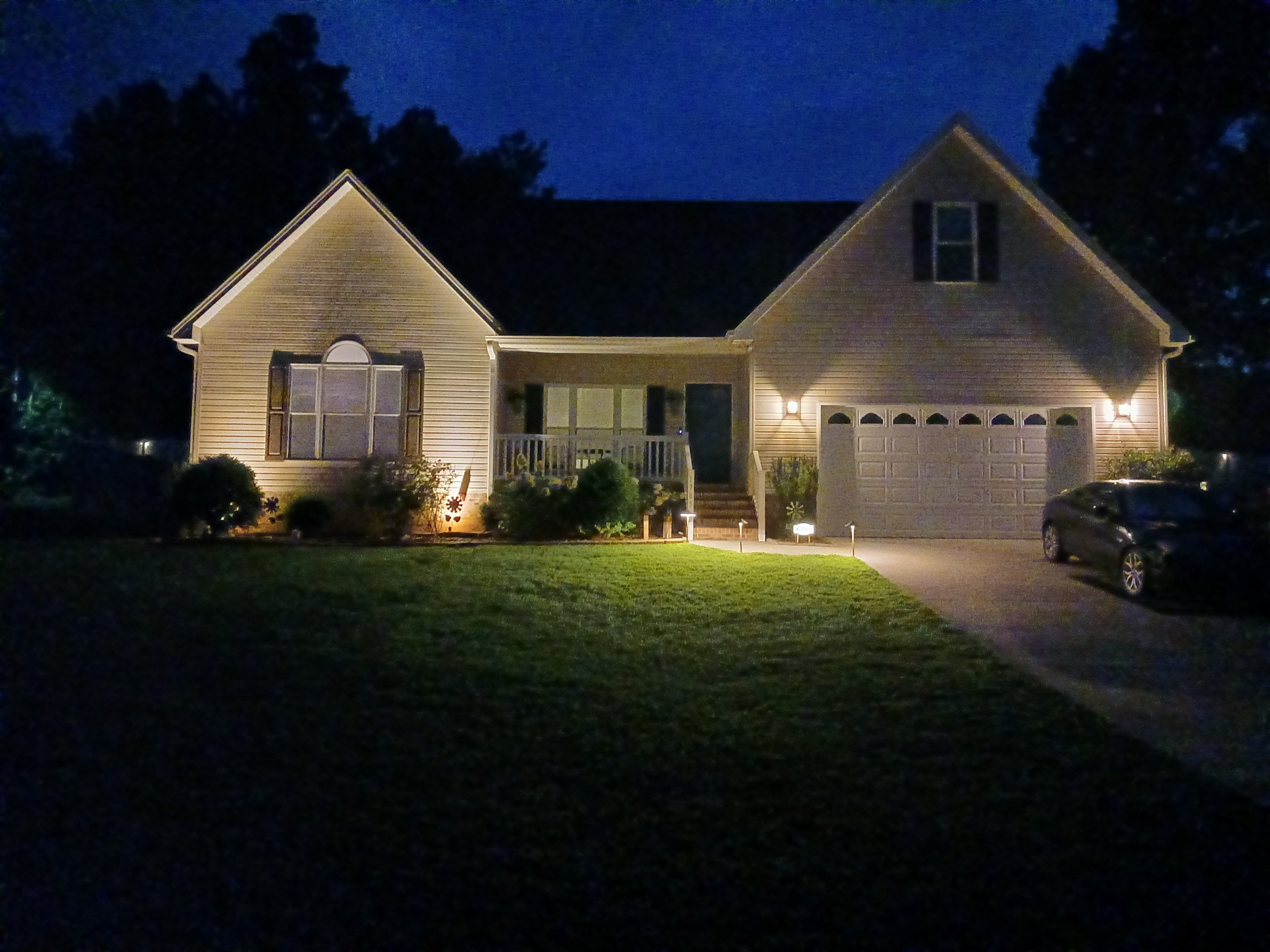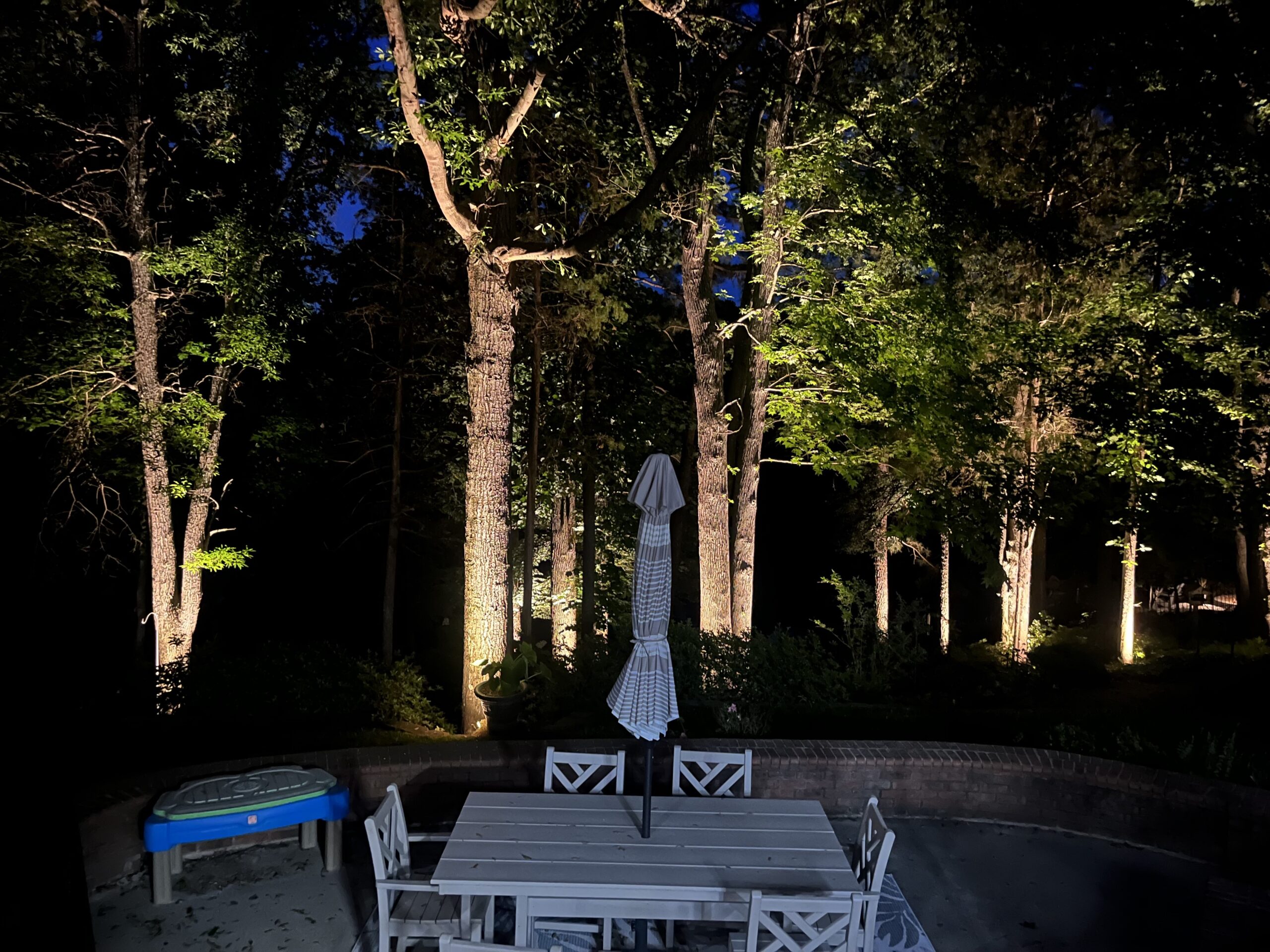There’s something about well-placed outdoor lighting that just changes the way a space feels. A soft glow can make a backyard feel inviting, a pathway feel safe, or a storefront feel more welcoming.
But it’s not just about looks—outdoor lighting actually influences how people behave. From how long someone lingers on your patio to whether they feel comfortable walking through a neighborhood, lighting sets the tone. This subtle design choice can guide mood, movement, and even decision-making without saying a word. It’s not just light—it’s psychology at work.
How Does Outdoor Lighting Affect Human Perception of Safety?
Let’s start with one of the most immediate impacts of outdoor lighting: how safe we feel. Whether you’re walking to your car in a parking lot or enjoying a stroll through your neighborhood after sunset, lighting can dramatically affect your sense of security.
In fact, perception of safety isn’t just based on whether danger exists—it’s based on whether we feel vulnerable. And good lighting can reduce that vulnerability almost instantly.
Here’s how lighting impacts safety perception:
- Visibility of Surroundings: The more we can see our environment, the more in control we feel. Dim or patchy lighting triggers anxiety because we can’t assess who or what is around us.
- Elimination of Shadows: Sharp shadows can make people uneasy, as they conceal potential threats. Even lighting helps reduce blind spots.
- Lighting Placement: Lights near entrances, corners, and stairways signal intentional safety design, giving people the confidence to move through those areas.
- Brightness Levels: Overly bright lighting can cause glare and make it harder to see into darker areas. Balance is key—too much light can be just as unsettling as too little.
Studies have shown that areas with well-designed outdoor lighting report reduced crime rates—not just because criminals avoid visibility, but because residents are more likely to use and watch over those spaces.
So, yes—lighting helps you see. But more importantly, it helps you feel seen, and that might be the ultimate deterrent.
What Role Does Ambient Lighting Play in Mood Regulation Outside?
Ever walked past a softly lit garden and felt instantly more relaxed? Or entered a harshly lit plaza and felt a strange sense of unease? That’s no accident. Ambient lighting—defined by the overall tone, warmth, and subtlety of light in a space—plays a massive role in regulating our mood in outdoor environments.
Just like indoor lighting can influence productivity, calm, or tension, outdoor lighting can set the emotional tone of a space the moment the sun sets.
Here’s how ambient lighting affects mood:
- Warm Tones Promote Calm: Amber, soft yellow, and warm white lighting create a soothing, comfortable atmosphere. They mimic firelight and sunsets—natural signals to wind down.
- Cool Tones Feel Clinical or Energetic: While useful in commercial or high-traffic areas, overly cool lighting can feel harsh, sterile, or emotionally distant.
- Flickering or Shifting Lights Distract: Inconsistent lighting, like flickering LEDs or mismatched bulbs, can cause subconscious irritation and break a sense of relaxation.
- Consistency Matters: Smooth transitions and even light distribution allow our nervous system to relax. Sudden changes in brightness can feel jarring and unnatural.
Think of outdoor lighting like a soundtrack. It sets the emotional pace of the space. The wrong ambiance makes people leave quickly. The right ambiance? They linger, they connect, and they come back.
Can Different Lighting Colors Influence Social Behavior in Public Spaces?
Believe it or not, the color of your outdoor lighting can impact whether people chat with neighbors, linger on park benches, or speed-walk to their destination without making eye contact.
Color psychology has long been used in marketing and interior design, but its power outdoors is just as real—if not more so. Color temperature, hue, and saturation all subtly signal how we should behave in a space.
Here’s how different lighting colors influence social behavior:
- Warm White (2700K–3000K): Encourages relaxation and social bonding. You’ll see this in cozy outdoor patios, restaurant seating, and residential landscapes. It tells your brain, “This is a safe, friendly space.”
- Cool White (4000K–5000K): Associated with alertness and attention. Common in parking lots and commercial zones, it keeps people focused but may reduce comfort or encourage brief, task-focused behavior.
- Blue Tints: Surprisingly effective at discouraging loitering or gathering. Some cities have used them in high-risk areas to subtly nudge people to move along.
- Colored Accent Lighting (Reds, Greens, Purples): Adds creativity and vibrancy. Used selectively, it can enhance social events or make a space feel festive. Overuse, however, can feel disorienting or even chaotic.
In parks, plazas, and shared outdoor areas, lighting color plays a role in setting the social “mood.” Want people to gather and enjoy the space? Stick with warm, inviting tones. Want a high-efficiency transit stop? Cool tones might be your best bet.
How Does Lighting Design Impact Movement Patterns in Outdoor Areas?
Ever wonder why some paths feel intuitive and safe, while others leave you fumbling for direction? Lighting design plays a huge part in how we move through outdoor environments.
Outdoor lighting isn’t just about revealing where the path is—it’s about gently guiding people where you want them to go. From subtle uplighting on trees to illuminated pathway edges, lighting design creates movement patterns as effectively as signs or fences.
Here’s how lighting affects movement:
- Pathway Lighting Creates Direction: Whether it’s subtle bollard lights or recessed ground lighting, illuminated paths naturally guide foot traffic and prevent straying.
- Accent Lighting Signals Destination: Pools of light over benches, gazebos, or entryways invite people toward those spaces.
- Dark Spots Discourage Exploration: If an area isn’t well-lit, people are less likely to go there. This can be used to protect sensitive landscaping or prevent access to restricted zones.
- Rhythm and Spacing Affects Speed: Evenly spaced lights create a steady visual rhythm that helps people feel safe and keep a comfortable pace. Uneven spacing causes hesitation or irregular walking patterns.
- Interactive Lighting (Motion Sensors): Lights that activate when people approach not only feel futuristic—they reinforce awareness and encourage continued movement through the space.
Smart lighting design transforms outdoor areas from confusing mazes to comfortable, walkable environments. It’s less about lighting everything—and more about lighting the right things in the right way.
Final Glow: Why Lighting is the Quiet Architect of Human Behavior
Outdoor lighting might seem like a minor detail in the grand scheme of design—but it’s actually a master manipulator. It affects our emotions, our movements, and our interactions with the world around us. From the glow on a garden path to the floodlights in a public square, the psychology of lighting is always at play.
The glow outside your home or business isn’t just there to help people see. It’s there to help them feel. Safe. Relaxed. Social. Or energized.
So the next time you’re walking through a well-lit park or relaxing on a softly illuminated patio, ask yourself: How does this light make me feel? Where is it leading me? And what would I do differently in the dark?
Chances are, you’ll realize that outdoor lighting isn’t just shaping the night—it’s shaping you.
Let Palmetto Outdoor Lighting Help You Light with Purpose
At Palmetto Outdoor Lighting, we believe every beam, bulb, and glow should serve more than function—it should spark feeling. Whether you’re enhancing a private backyard, guiding visitors through a public space, or designing an environment to foster connection, our expert lighting designers know how to blend psychology, style, and performance.
We don’t just light spaces—we create experiences. Let’s bring intention to every inch of your property and design a nighttime environment that inspires, comforts, and connects.
Ready to transform your outdoors with purpose-driven lighting? Contact Palmetto Outdoor Lighting today.





